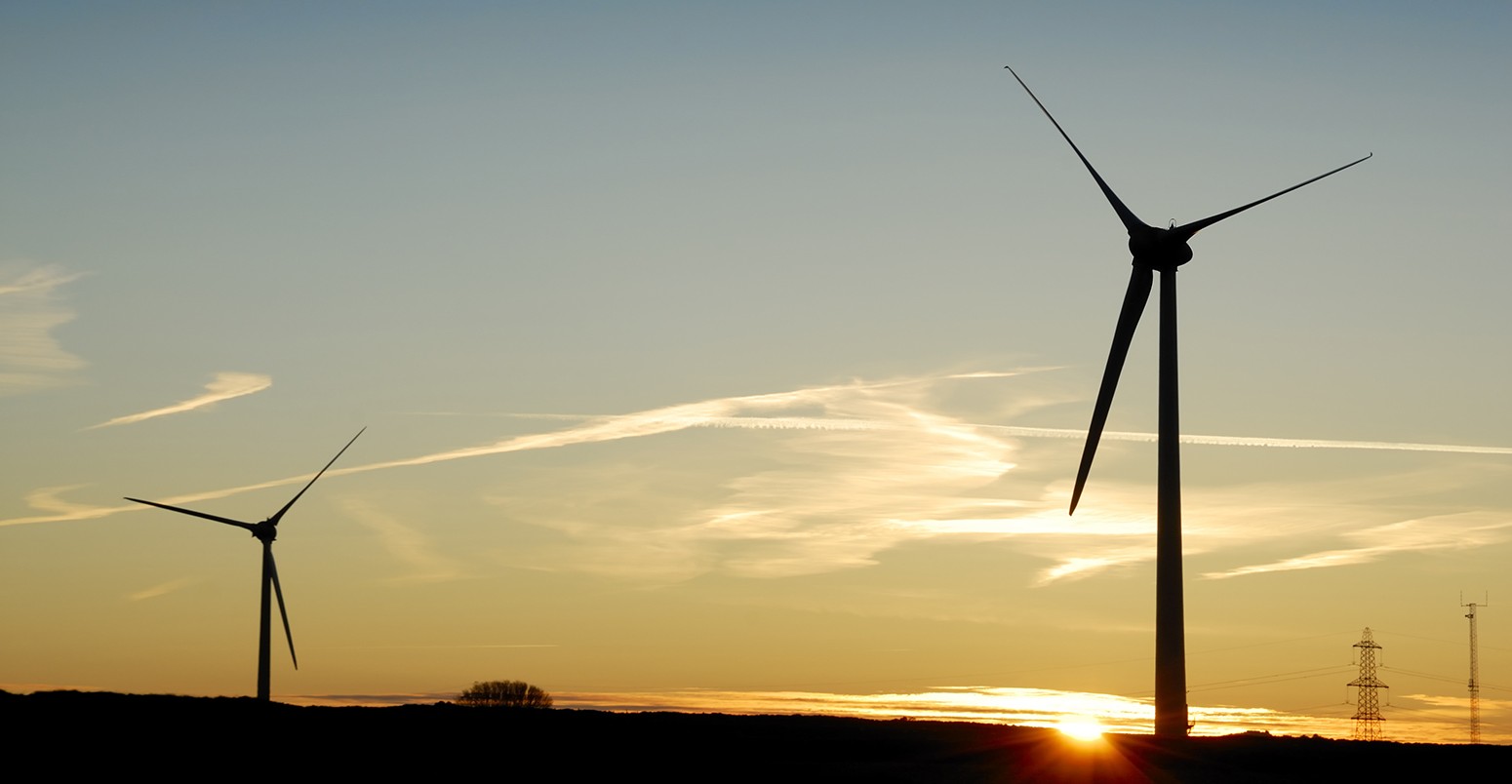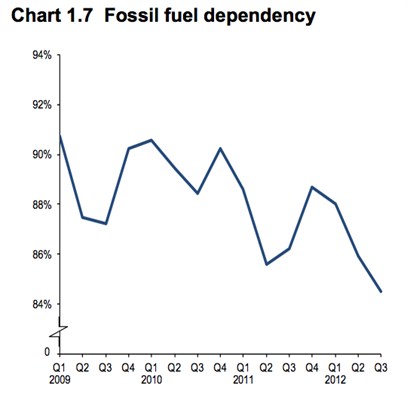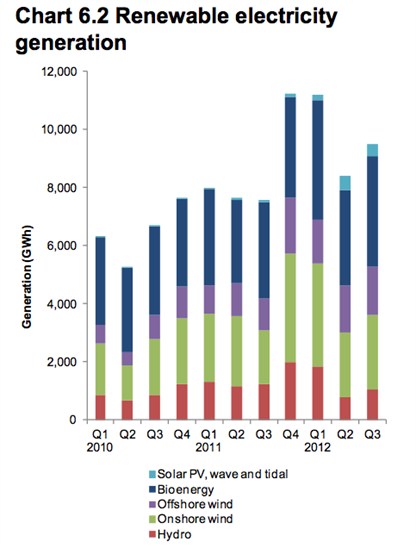
Mat Hope
21.12.2012 | 3:30pmThe Department for Energy and Climate Change (DECC) yesterday released the latest figures on the UK’s energy use. They show an increase in the share of power produced from renewable energy – but the UK is still largely dependant on fossil fuels.
The Telegraph reports today that the amount of electricity generated by wind power between July and September had increased by more than a third on the same period last year, equalling the record-high levels of electricity generated from renewable sources set at the end of 2011. Meanwhile, the UK continues to depend on fossil fuels – and coal in particular – to provide much of its electricity.
The new statistics cover the period from the start of July to the end of September this year.
Less dependency on fossil fuels for energy
Despite the bulk of energy – 84.5 per cent – coming from fossil fuels, this is less than it used to be. The figure, which covers all energy production, is 1.7 per cent less than in the same period last year, and actually a record low level.
However, this doesn’t include imported energy, much of which is produced by burning fossil fuels. Energy imports were 1.4 per cent higher from July to September this year than in the same period in 2011.
The fall in the amount of energy produced from fossil fuels in the UK over the period was balanced by an increase in renewable and nuclear energy production and imported energy – not renewables alone.
More electricity from coal, nuclear and renewables
Coal was the single largest source of the UK’s electricity generation from July through September this year. This is a dramatic change from the same period in 2011, when gas was the biggest source of electricity.
The amount of electricity generated from renewables also increased in July through September this year compared to the same period in 2011, from 9.1 per cent to 11.7 per cent.

2012 saw the highest share of electricity generation from coal in the third quarter for 14 years. In contrast, gas had its lowest share of electricity generation in 14 years.
The amount of electricity generated from gas decreased by 18.1 per cent compared to the same period in 2011, down to 28.2 per cent. This is due to high gas prices, DECC say, which meant that many gas plant were run at low levels over the period.
The share of electricity generated by renewables was 2.6 per cent higher than in the same period in 2012, increasing to 11.7 per cent.
The share of electricity from nuclear also increased in 2012, to 22.3 per cent of electricity generation, a rise of 3.4 per cent on the same period in 2011.
While the UK is generating more electricity from low-carbon sources, much of it is from nuclear. The UK continues to be dependent on fossil fuels – and coal in particular – to generate electricity.
Renewables increase down to bioenergy and wind
The total electricity generated from renewables was 25 per cent higher in 2012 than in the same period in 2011. Most of the increase came from bioenergy and wind.
Bioenergy accounted for 40 per cent of electricity generated by renewables, while 27 per cent came from onshore wind and 18 per cent came from offshore wind.
Bioenergy includes electricity generated from landfill gas, sewage gas, biodegradable municipal solid waste, plant biomass, animal biomass, and anaerobic digestion and co-firing, and generation from bioenergy increased by 15 per cent compared with the same period in 2011.
Electricity generated from onshore wind rose by 38 per cent, while offshore wind was up by 54 per cent. Both of these increases were due to an increase in wind farm capacity.
So while the amount of wind power in the UK’s energy mix has certainly increased, the increase in the amount of electricity generated from renewables was not solely down to wind but also to a large amount of bioenergy sources.
The UK is using energy from renewable sources to meet more of its energy needs than it was at the same point a year ago. But while the amount of electricity produced from these sources is increasing, it still only accounts for a small share of the UK’s energy mix. As it stands, the UK is still very much a country reliant on fossil fuels to meet its energy needs.



